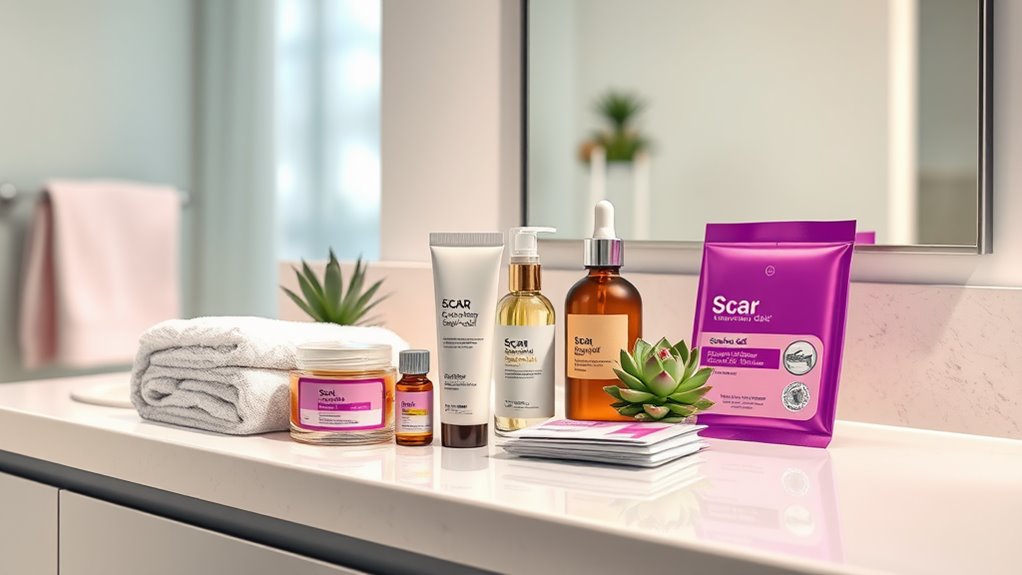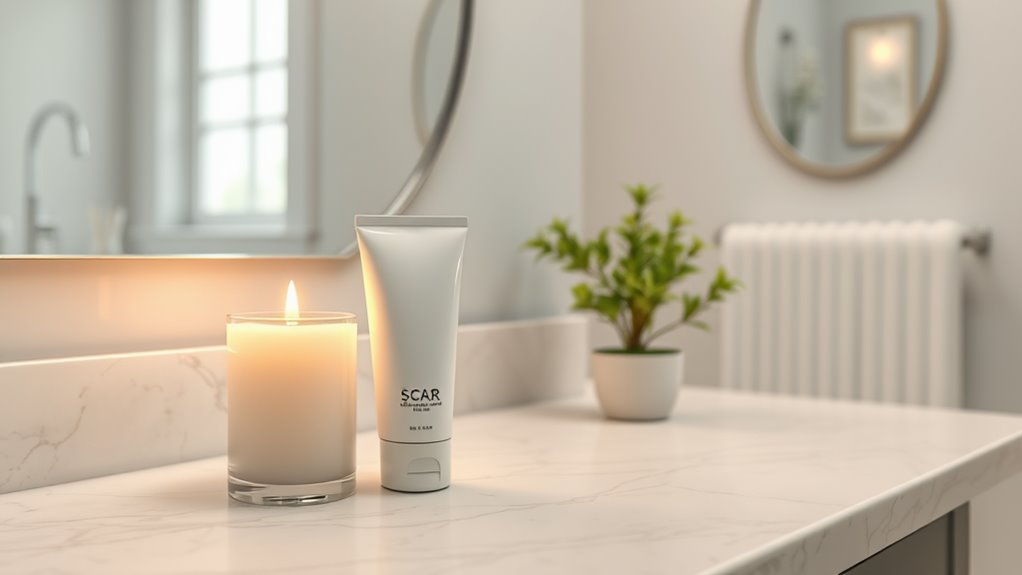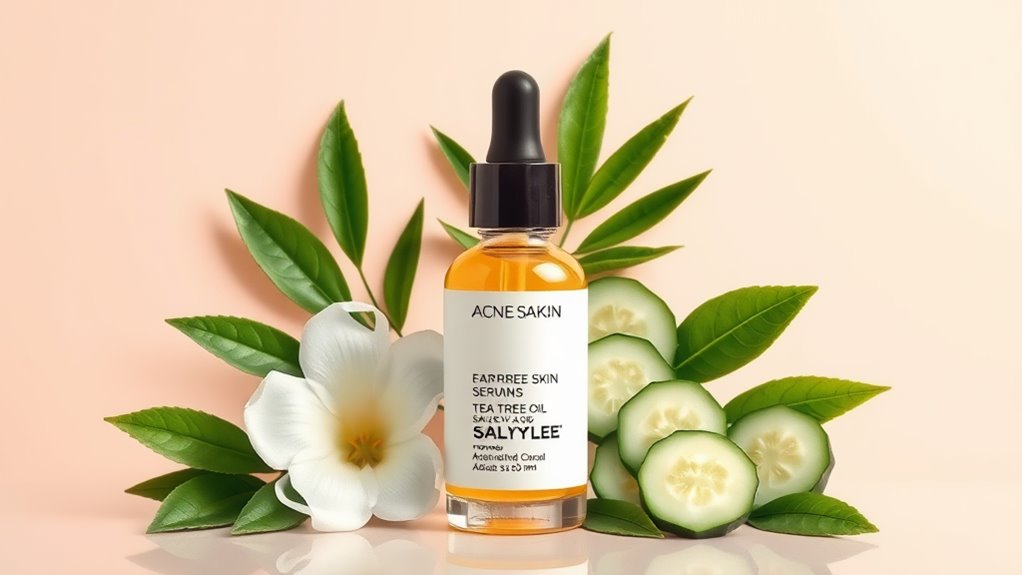Scar Removal Techniques That Actually Work
If you’re dealing with scars and wondering what really works, you’re not alone. Many options exist, from topical treatments to advanced procedures like laser therapy. Each technique has its own benefits and limitations, so it’s essential to find the right fit for your skin. Want to know which methods could help you achieve smoother skin? Let’s explore the effective scar removal techniques available today.
Key Takeaways
- Topical Treatments: Use silicone-based creams and retinoids to hydrate and promote skin cell turnover for effective scar management.
- Laser Therapy: Focused light energy improves scar appearance and stimulates collagen production, often requiring multiple sessions for best results.
- Microneedling: This procedure creates micro-injuries to enhance collagen and elastin production, promoting skin repair and reducing scar visibility.
- Chemical Peels: Exfoliating the skin with mild to deep acids can effectively reduce scars and promote fresh skin growth.
- Natural Remedies: Consistent application of aloe vera, coconut oil, or raw honey can soothe and regenerate scarred skin.
Understanding Different Types of Scars
Scars come in various forms, each telling a unique story of healing and trauma. Understanding the different types of scars is vital for effective treatment.
Hypertrophic scars, raised and red, often form after surgery or injury, while atrophic scars, like acne scars, leave depressions in the skin.
Keloid scars, larger than the original injury, can be stubborn and require specialized care.
When considering spot correction, it’s essential to identify the scar type to tailor your approach.
For instance, laser therapy can greatly improve hypertrophic scars, while chemical peels might be more effective for atrophic scars.
Topical Treatments: Creams and Ointments
When it comes to scar management, topical treatments like creams and ointments can greatly enhance your healing process.
These products often contain ingredients such as silicone, which helps to hydrate and flatten scars, or retinoids, which promote skin cell turnover. For best results, apply these treatments consistently, usually twice daily, to allow the active ingredients to penetrate effectively.
Look for formulations specifically designed for scar reduction, as they often include additional beneficial components like vitamin E or onion extract.
Laser Therapy: How It Works
Laser therapy offers a cutting-edge approach to scar treatment, using focused light energy to target and improve the appearance of various types of scars.
By directing the laser precisely onto the scarred tissue, it stimulates collagen production and promotes skin resurfacing. This targeted energy breaks down scar tissue and encourages the growth of healthier skin cells.
You’ll notice that the procedure typically requires multiple sessions, depending on your scar’s severity and your skin type. It’s vital to consult a qualified practitioner who can tailor the treatment to your specific needs.
After the sessions, you can expect improved texture and color, as laser therapy effectively reduces scar visibility, giving you renewed confidence in your skin’s appearance.
Microneedling: Stimulating Collagen Production
Microneedling is an effective technique that stimulates collagen production in your skin.
By creating tiny micro-injuries, it encourages your body to heal and regenerate, resulting in smoother skin.
To maximize your results, proper aftercare is essential, so let’s explore how this process works and what you need to do afterward.
How Microneedling Works
One of the most innovative techniques for scar removal is microneedling, which works by creating tiny punctures in the skin to stimulate collagen production.
As you undergo this treatment, the microneedles penetrate the epidermis, triggering your body’s natural healing response. This process not only boosts collagen but also enhances elastin levels, vital for skin elasticity and resilience.
Each session encourages your skin to repair itself, effectively reducing the appearance of scars over time. The controlled micro-injuries promote cell turnover and can improve skin texture and tone.
It’s important to follow post-treatment care for best results. With consistent sessions, you’ll likely notice significant improvements in your skin’s overall appearance, making microneedling a powerful tool in scar management.
Benefits of Collagen Stimulation
While you might seek various methods for improving your skin, the benefits of collagen stimulation through microneedling stand out. This technique triggers your body’s natural healing response, promoting collagen and elastin production. As a result, you’ll notice improved skin texture, reduced scars, and enhanced elasticity.
Microneedling also increases product absorption, allowing serums and treatments to penetrate deeper and work more effectively. You’ll appreciate the long-lasting results, as increased collagen production continues for months post-treatment.
Additionally, the procedure is minimally invasive, with little downtime, making it a practical choice for busy schedules. Embracing this method not only rejuvenates your skin but also empowers you to take control of your skin’s health and appearance.
Aftercare for Optimal Results
To achieve the best results after microneedling, proper aftercare is essential.
Immediately after your treatment, your skin will be sensitive and may appear red. Avoid touching your face, and resist the urge to pick at any scabs that form.
Use a gentle cleanser and apply a soothing serum rich in hyaluronic acid to hydrate and promote healing. Don’t skip sunscreen; UV protection is critical for the recovery process.
For the first few days, steer clear of makeup, harsh chemicals, and vigorous exercise, as these can irritate your skin.
Stay well-hydrated and nourish your body with nutrient-rich foods to support collagen production.
Chemical Peels: Exfoliation for Scar Reduction
Chemical peels can be an effective option for reducing scars by exfoliating the skin’s surface.
You’ll find various types of peels available, each with its own procedure and aftercare requirements.
Understanding the expected results and potential risks will help you make an informed decision about whether this treatment is right for you.
Types of Chemical Peels
If you’re looking to reduce the appearance of scars, understanding the different types of chemical peels can be a game changer.
There are three main categories: superficial, medium, and deep peels.
Superficial peels use mild acids, like glycolic or salicylic acid, to gently exfoliate the outer layer of skin, perfect for minor scars.
Medium peels penetrate deeper, targeting the dermis to improve more prominent scars, often using trichloroacetic acid.
Deep peels, such as phenol, offer significant results but require careful consideration due to their intensity and longer recovery time.
Procedure and Aftercare
Understanding the procedure and aftercare for chemical peels can greatly enhance your scar reduction results.
First, a trained professional applies a chemical solution to your skin, targeting the outer layers. You’ll experience a tingling sensation, and redness may follow.
Afterward, it’s essential to follow the aftercare regimen meticulously. Keep the area clean and moisturized, using gentle products recommended by your practitioner. Avoid sun exposure and wear broad-spectrum sunscreen to protect your healing skin.
You might notice peeling as your skin renews itself, which is normal. Stay hydrated and consider avoiding strenuous activities that could irritate your skin.
Expected Results and Risks
While results can vary, many people see significant improvements in their scars after a series of chemical peels. These treatments help exfoliate the skin, promoting new cell growth and often leading to smoother, more even skin texture.
However, it’s important to recognize potential risks:
-
Skin Sensitivity: Your skin may become more sensitive, requiring careful sun protection.
-
Post-Inflammatory Hyperpigmentation: Darkening of the skin can occur, especially in those with darker complexions.
-
Infection Risk: Improper aftercare can lead to infections, so following guidelines is vital.
Understanding these risks while maintaining realistic expectations can empower you in your scar reduction journey.
With patience and proper care, chemical peels can be a powerful ally in achieving clearer skin.
Surgical Options: Scar Revision Procedures
Surgical options for scar revision procedures offer effective solutions for individuals seeking to improve the appearance of their scars.
These techniques, such as excision, dermabrasion, and laser surgery, can considerably enhance your skin’s texture and tone.
Excision involves removing the scar tissue, allowing for a smoother result.
Dermabrasion gently sands the skin to eliminate the top layer, promoting fresh skin growth.
Laser surgery targets the scarred area with focused light, stimulating collagen production for a more supple appearance.
Each option has its unique benefits and considerations, so it’s essential to consult with a board-certified dermatologist or plastic surgeon.
They’ll assess your specific situation and recommend the best approach to achieve ideal results tailored to your needs.
Natural Remedies: Home Treatments for Scars
If you’re looking for gentle and affordable options to reduce the appearance of scars, natural remedies can be a great place to start.
These treatments harness the power of nature to promote healing and improve skin texture. Here are three effective remedies you might consider:
-
Aloe Vera – Apply fresh aloe vera gel directly to your scar daily. Its anti-inflammatory properties can help soothe the skin and promote regeneration.
-
Coconut Oil – Massage warm coconut oil into your scar for about 10 minutes. The fatty acids nourish the skin and may help soften the scar tissue.
-
Honey – Use raw honey as a natural moisturizer. It can help hydrate the skin and has healing properties that may assist in fading scars over time.
Experiment with these remedies consistently for best results!
Importance of Sun Protection in Scar Healing
Natural remedies can greatly aid in scar healing, but protecting your skin from the sun is just as important. UV exposure can darken scars and prolong their healing process. To master scar care, you need to understand how sun protection works. Additionally, adopting better lifestyle choices can enhance your skin’s overall health and resilience against aging.
| Action | Importance |
|---|---|
| Apply sunscreen | Prevents UV damage and darkening of scars |
| Wear protective clothing | Shields scars from direct sunlight |
| Seek shade | Reduces UV exposure during peak hours |
| Avoid tanning beds | Prevents further skin damage |
| Reapply sunscreen | Guarantees consistent protection throughout the day |
Managing Expectations: Recovery Times and Results
While you might hope for immediate results, managing your expectations regarding recovery times and outcomes is essential in scar treatment.
Healing is a process that varies greatly based on several factors. Understanding these can help you navigate your journey more effectively.
-
Technique Matters: Different scar treatments, like laser therapy or chemical peels, have varying recovery durations.
-
Individual Healing: Your skin type, scar depth, and overall health influence how quickly you’ll see improvements.
-
Patience is Key: Many treatments require multiple sessions, and final results may take months to fully manifest. Additionally, incorporating scientifically-proven methods can enhance the effectiveness of your treatment plan.
Frequently Asked Questions
Can Scars Completely Disappear With Treatment?
Scars might not completely disappear, but with the right treatment, you can greatly reduce their appearance. By exploring various options, you’ll empower yourself to achieve smoother skin and boost your confidence effectively.
How Long Does It Take to See Results?
You’ll typically see initial results within a few weeks, but full effects can take several months. Patience is key, and consistent treatment will help you achieve the best outcome for your skin’s appearance.
Are Treatments Safe for All Skin Types?
Not all treatments are safe for every skin type. You should consult a dermatologist to evaluate your specific needs, ensuring the chosen method won’t cause irritation or adverse reactions on your skin.
What Should I Avoid During Scar Treatment?
During scar treatment, you should avoid sun exposure, harsh chemicals, and picking at the scars. Stick to gentle products and follow your treatment plan closely for the best results. Your skin will thank you!
Will Scars Return After Treatment Stops?
Yes, scars can return after treatment stops, especially if you neglect proper skincare or expose your skin to harsh conditions. Stay vigilant with your routine to minimize the risk of scars reappearing.
Conclusion
To sum up, finding the right scar removal technique depends on your unique needs and the type of scars you have. Whether you opt for topical treatments, advanced procedures, or natural remedies, consistency is key to seeing results. Don’t forget to protect your skin from the sun during the healing process. By managing your expectations and being patient, you can achieve smoother, healthier skin that boosts your confidence. Explore your options and take the first step towards scar reduction today!





